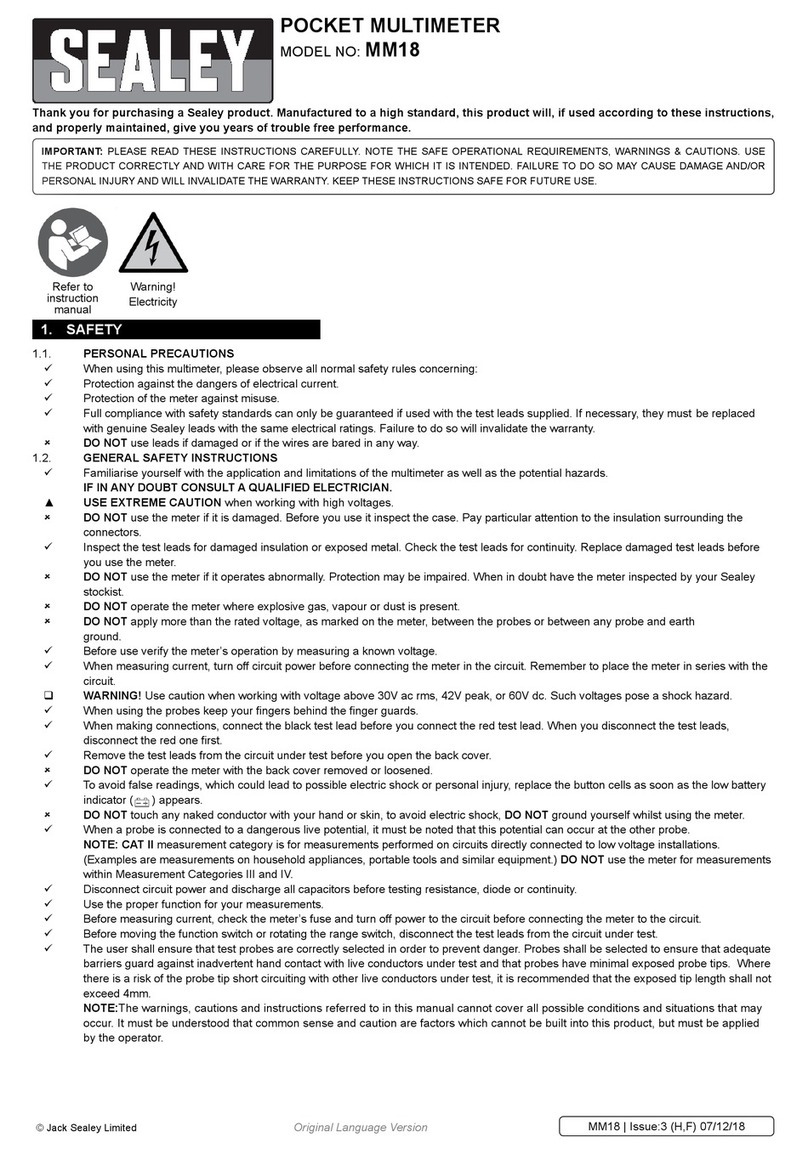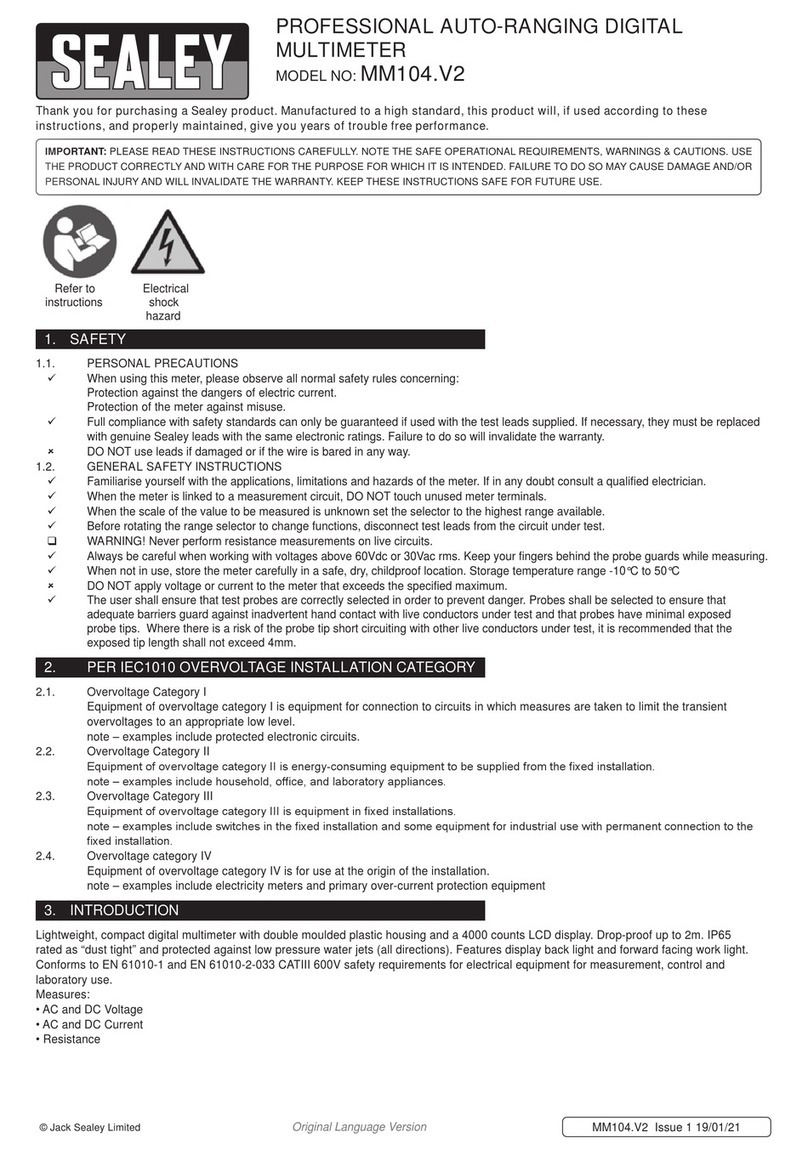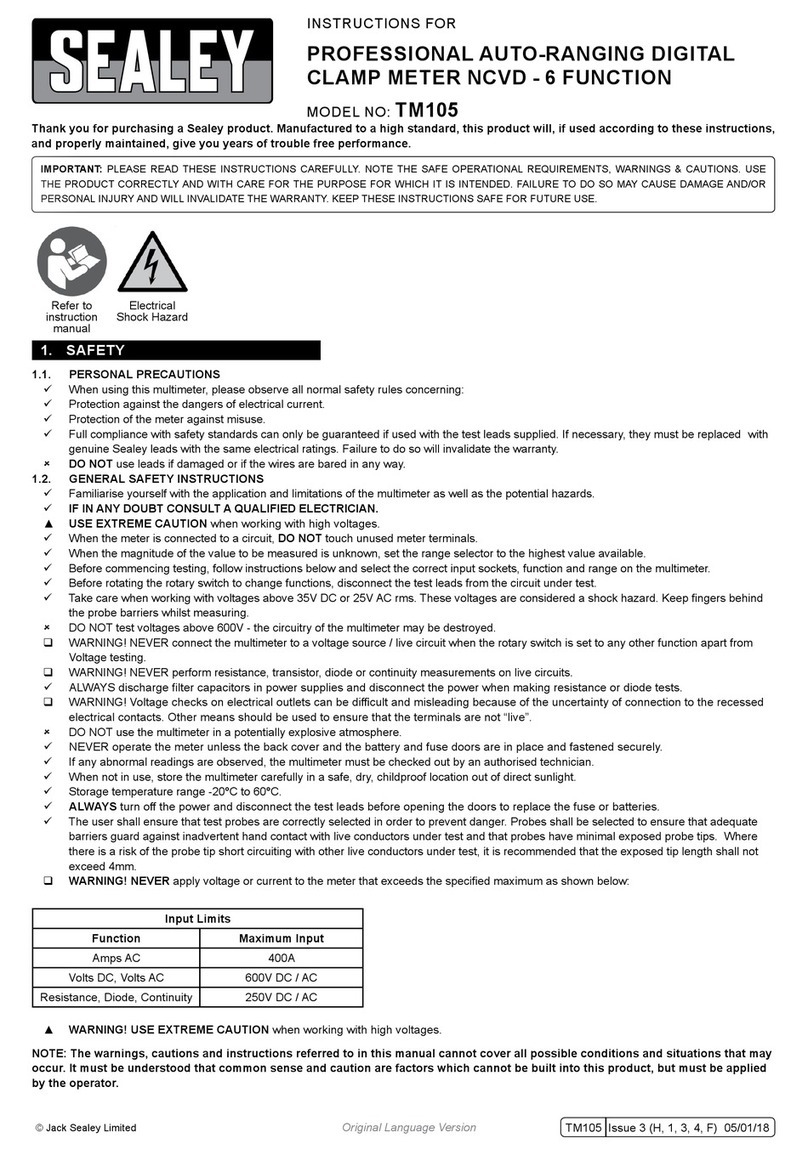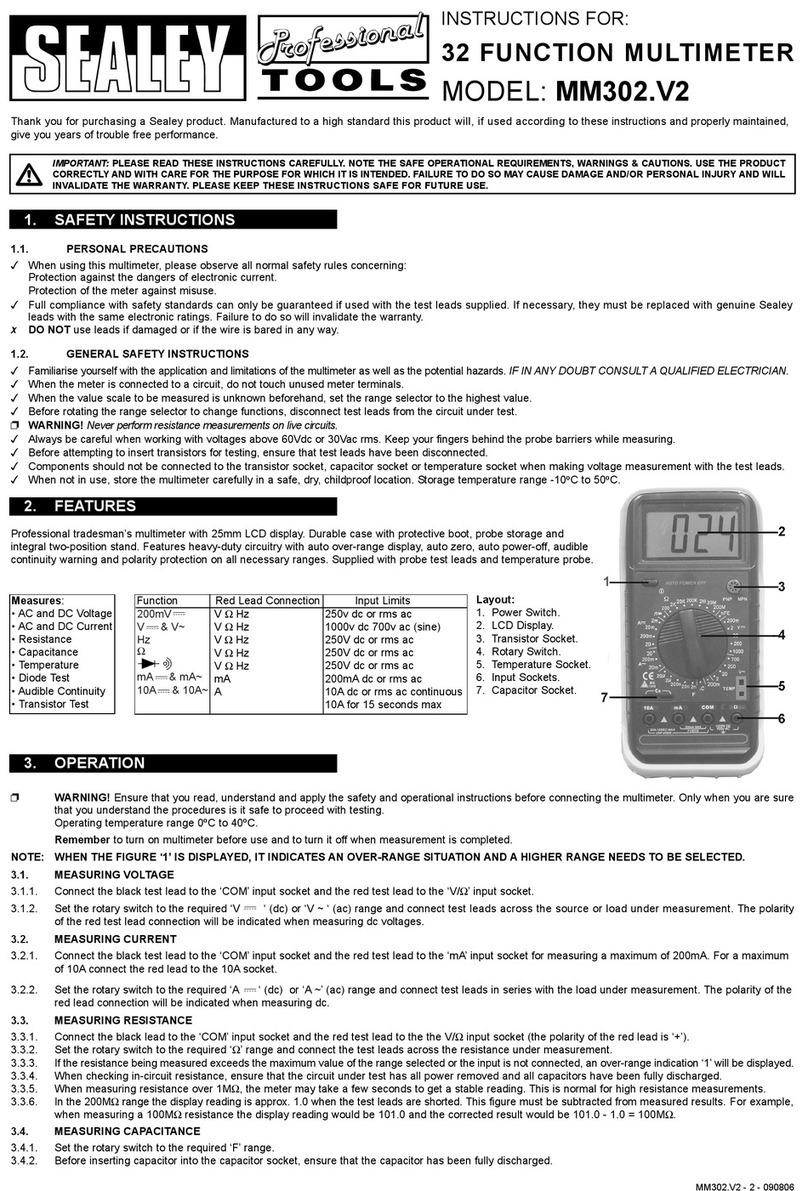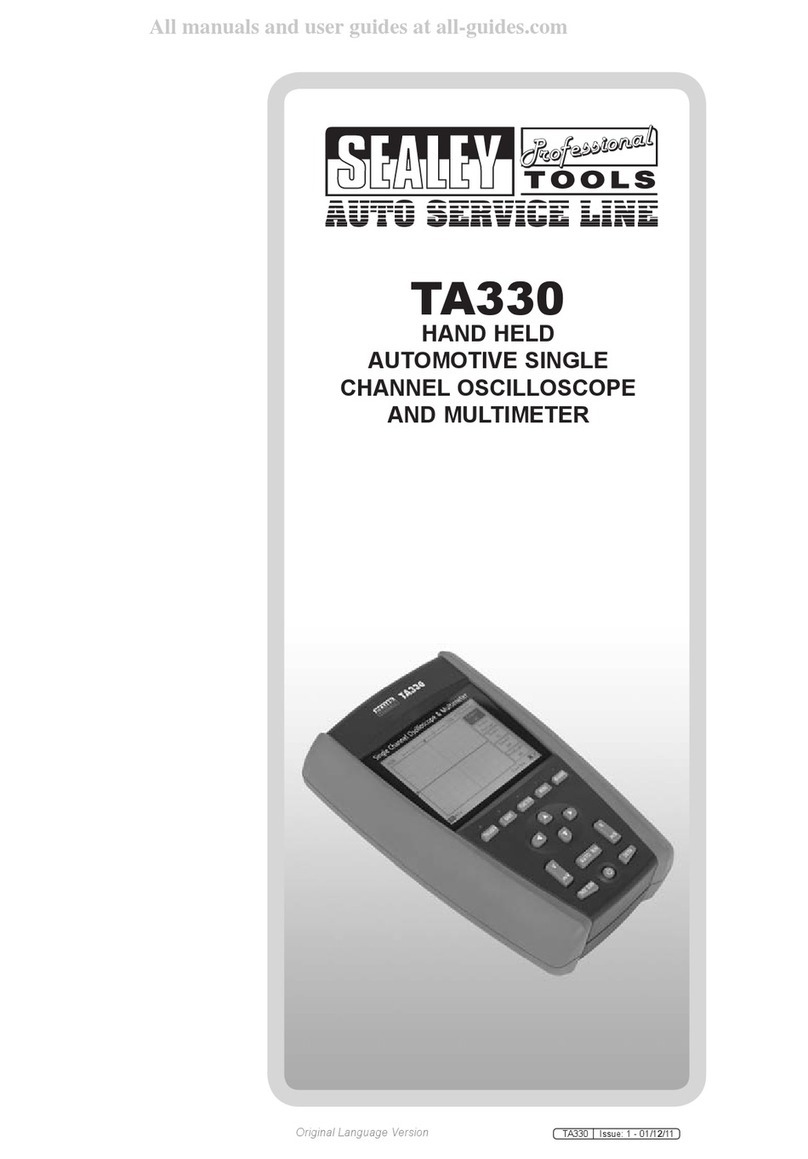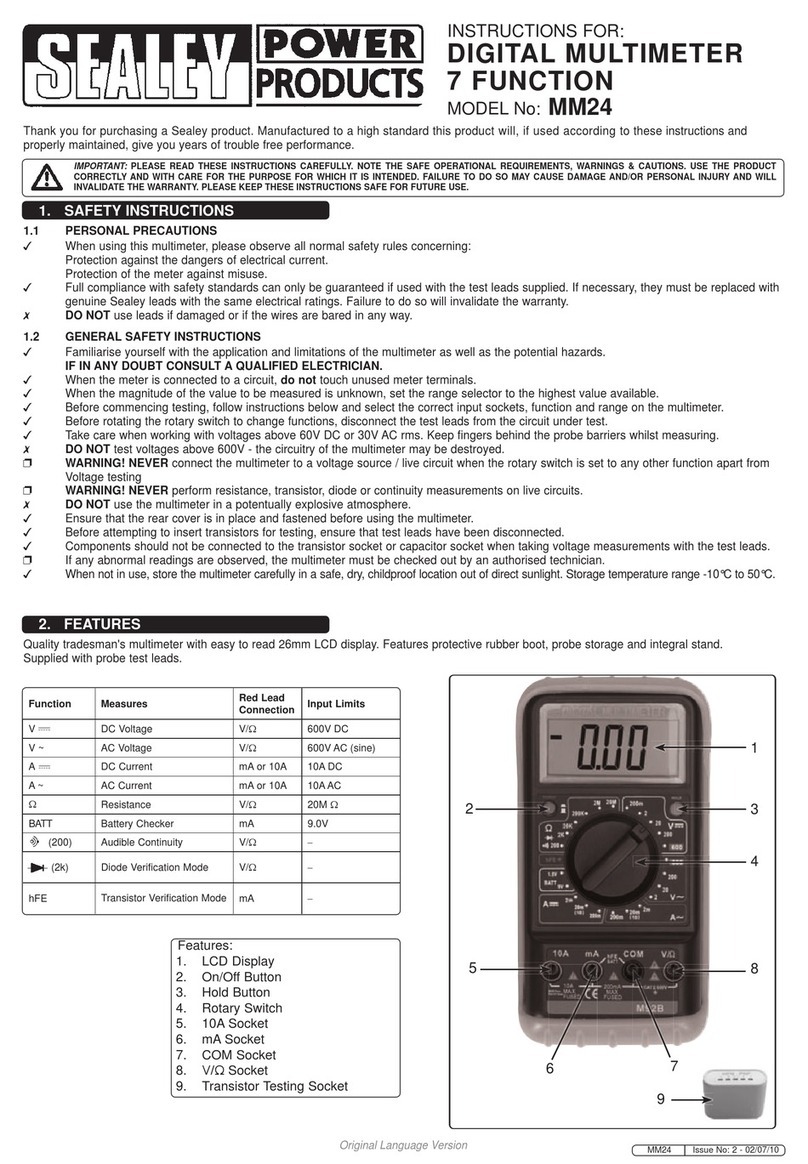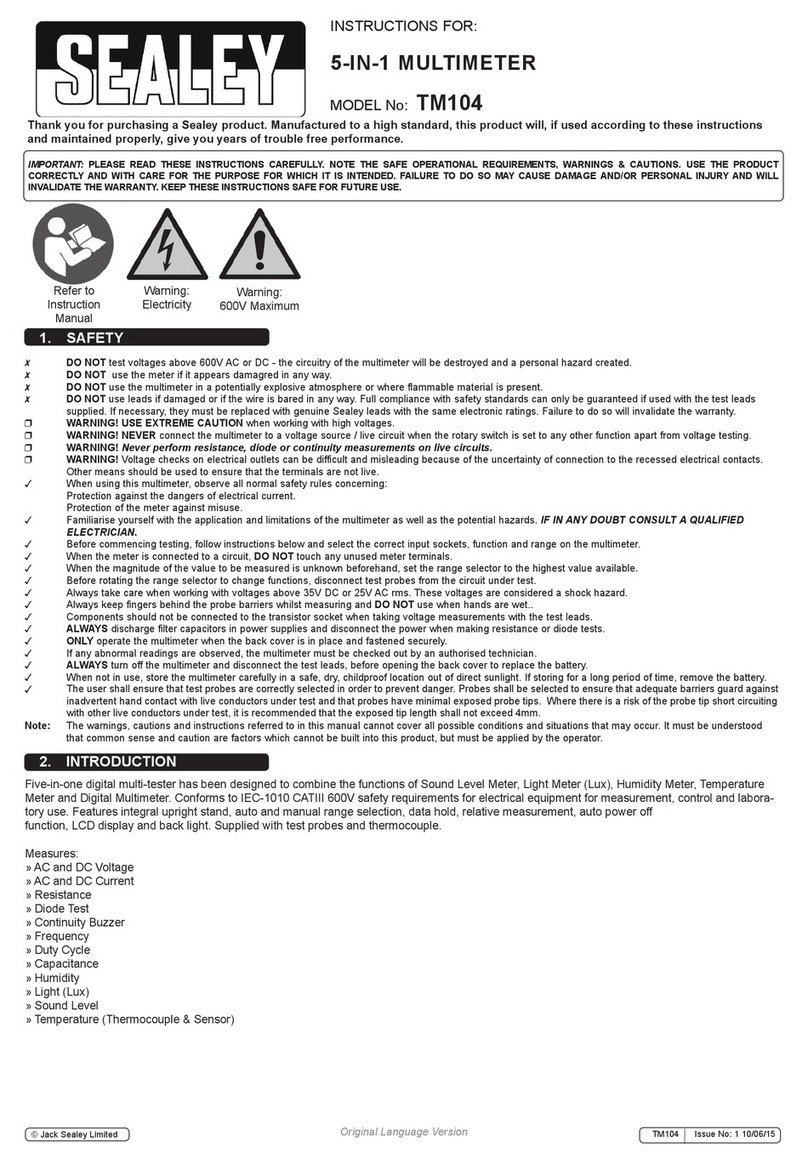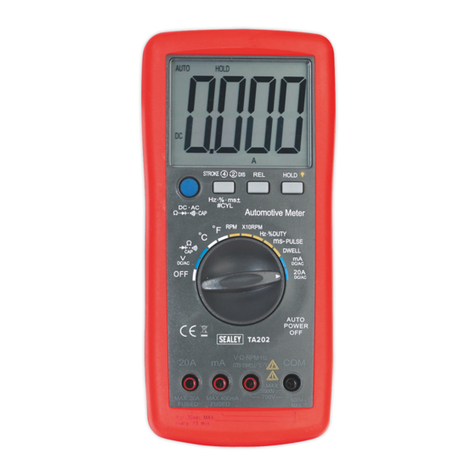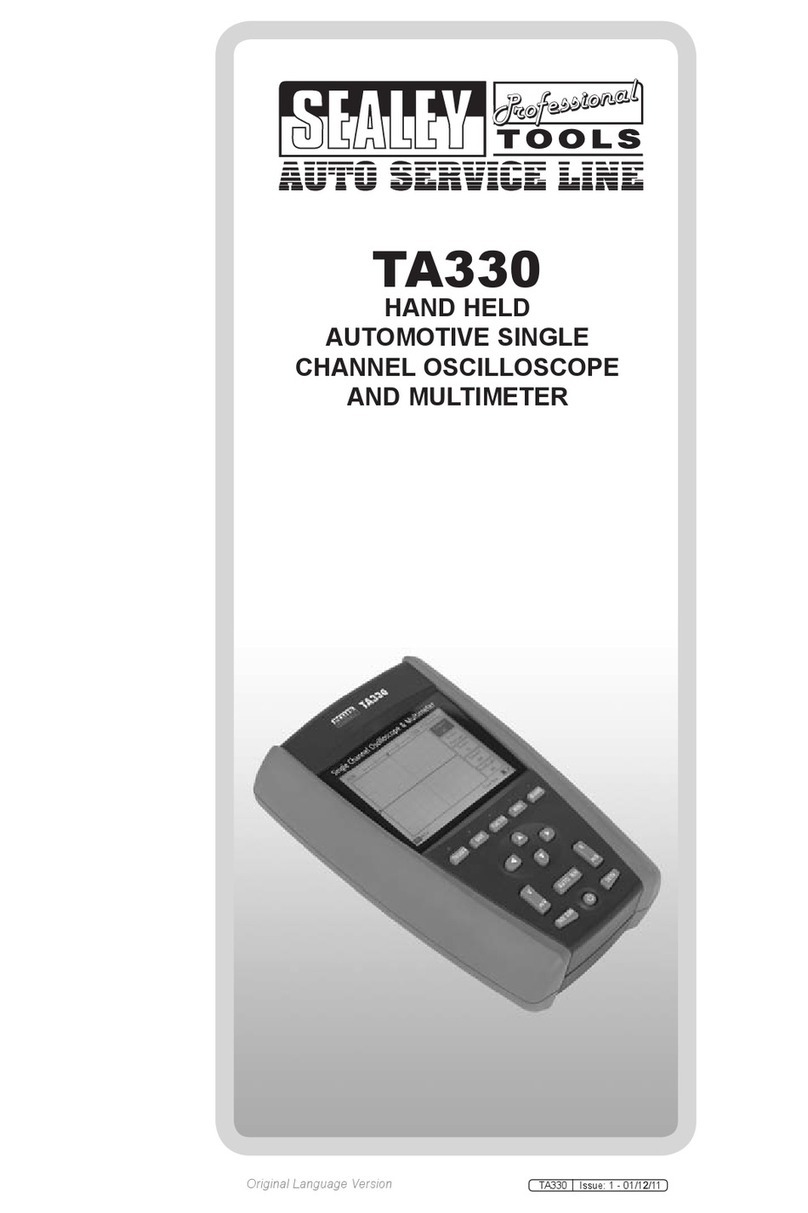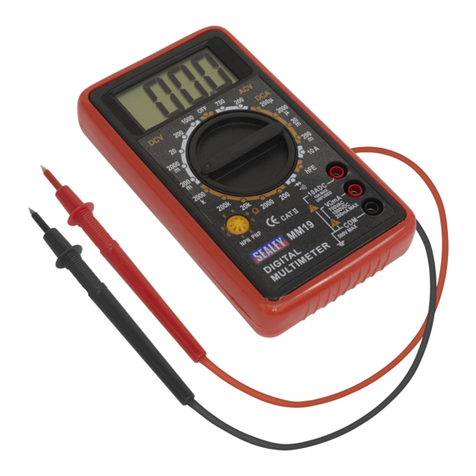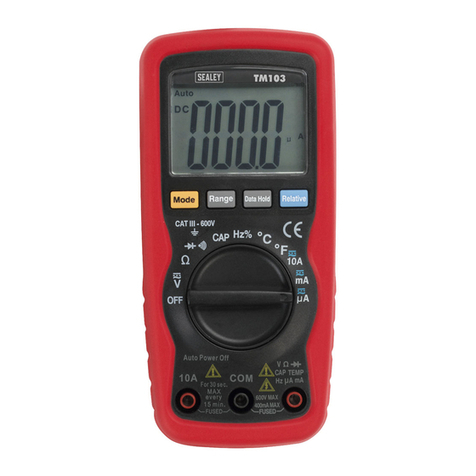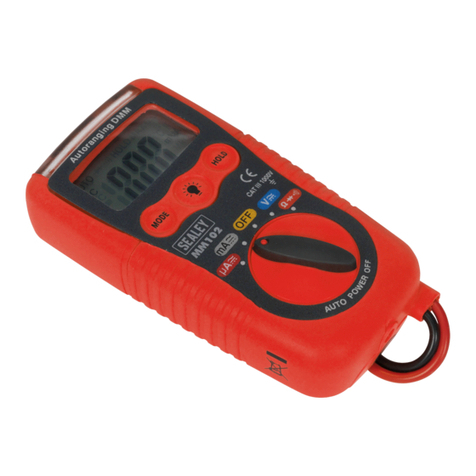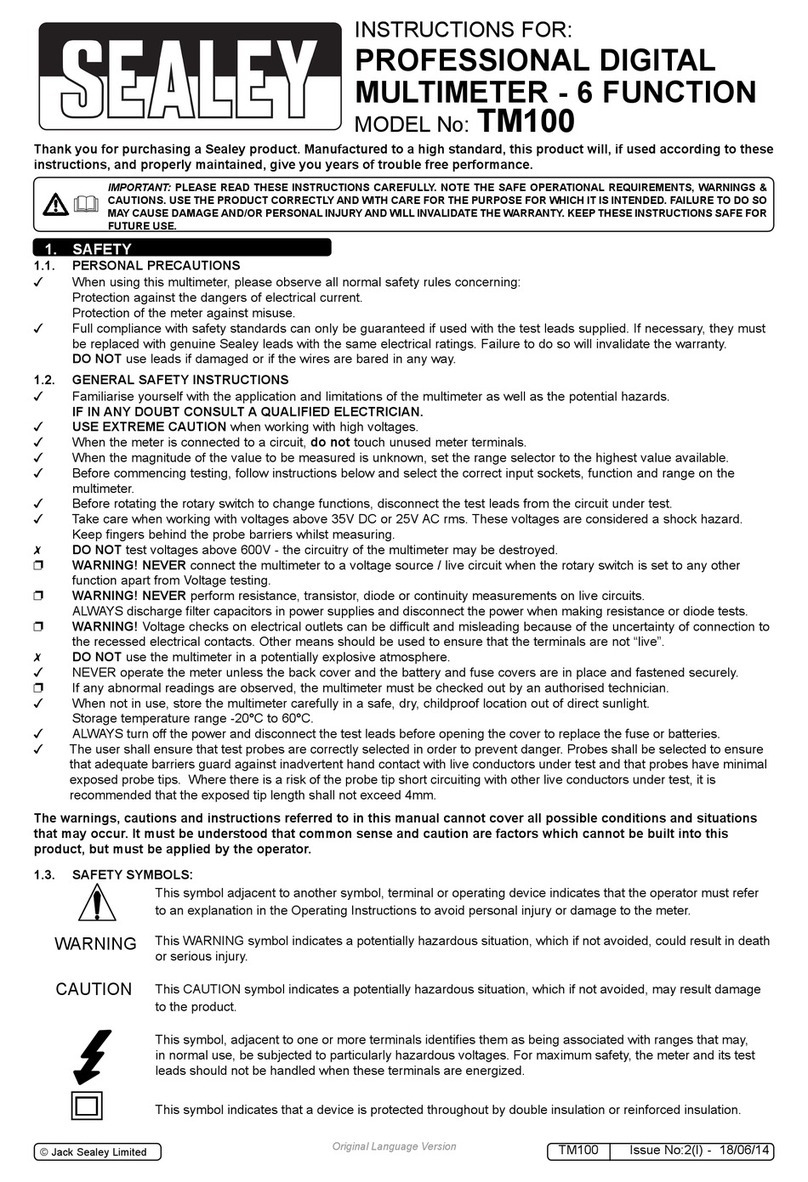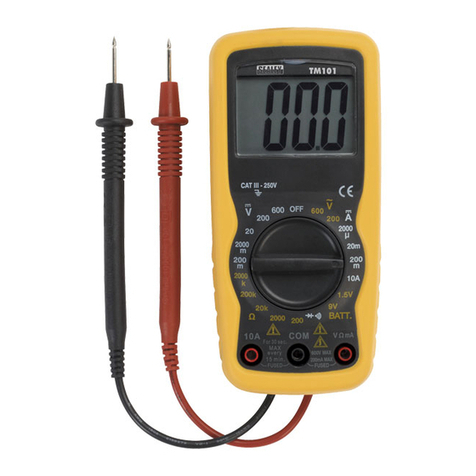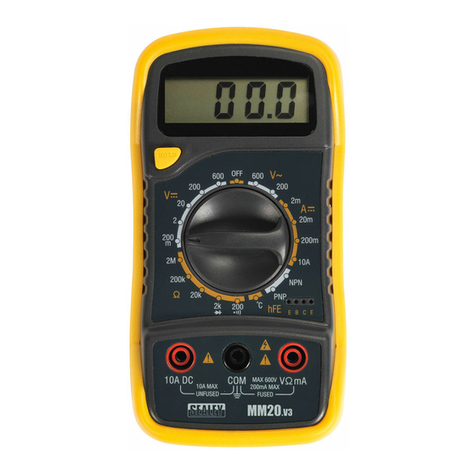
3.5. DIODE TESTING
3.5.1. Connect the black lead to the COM input socket and the red lead to to the V/Winput socket (the polarity of the red lead is +).
3.5.2. Set the rotary switch to the position and connect the red lead to the anode and the black lead to the cathode of the diode under test. The meter
will show the approximate forward voltage of the diode. If the leads are reverse connected, only 1 is displayed.
3.6. TRANSISTOR TESTING
3.6.1. Set the rotary switch to the hFE position.
3.6.2. Determine whether the transistor to be tested in NPN or PNP type and locate the Emitter, Base and Collector leads. Insert leads of the transistor into
the correct holes in the transistor testing socket.
3.6.3. The meter will show the approximate hFE value at test conditions of base current 10µA and Vce 2.8V.
3.7. CONTINUITY TEST
3.7.1. Connect the black lead to the COM input socket and the red lead to the V/Winput socket (the polarity of the red lead is +).
3.7.2. Set the rotary switch to the position and connect the test leads across the two points of the circuit under test. If continuity exists (i.e. resistance less
than 50W) the built-in buzzer will sound.
3.8. MEASURING TEMPERATURE
3.8.1. Set the rotary switch to the OC position and the LCD display will show the ambient temperature.
3.8.2. Insert the K type thermocouple plug into the temperature socket on the front panel and touch the object to be measured with the thermocouple probe.
p WARNING! To avoid electric shock, ensure that the thermocouple has been removed before changing to another function measurement.
5. MAINTENANCE
4. SPECIFICATION
6. DECLARATION OF CONFORMITY
p WARNING! Before attempting to open the case, ensure that test leads have been disconnected from measurement circuits to avoid electric shock hazard.
5.1. For continued protection against fire, replace fuse only with another of the same rating (F200mA/250V Quick Acting). Fuse is located behind battery cover (see 5.2.).
5.2. If the battery sign appears on the LCD display, it indicates that the battery should be replaced. Remove the meter from the outer
protective casing. Remove the battery cover retaining screw (behind base of meter stand) and slide off the battery cover. Replace the battery with
one of the same type and size (9V PP3).
5.3. SPARE PARTS
TA97/TP - Temperature Probe MM19/F - Fuse, 200mA MM30/L - Set of Leads
For Jack Sealey Ltd. Sole UK importer of Sealey Professional Tools.
MM402 - 1 - 061201
01284 757500 01284 703534 E-mail: sales@sealey.co.uk
NOTE: It is our policy to continually improve products and as such we reserve the right to alter data, specifications and component parts without prior notice.
IMPORTANT: No liability is accepted for incorrect use of this equipment.
WARRANTY: Guarantee is 12 months from purchase date, proof of which will be required for any claim.
INFORMATION: For a copy of our latest catalogue and promotions call us on 01284 757525 and leave your full name and address, including postcode.
Sole UK Distributor,
Sealey Group,
Bury St. Edmunds, Suffolk.
Declaration of Conformity We, the sole UK importer, declare that the product listed below is in conformity with the following standards and directives.
The construction file for this product is held by the Manufacturer and may be inspected,
by a national authority, upon request to Jack Sealey Ltd.
DIGITAL MULTIMETER
Model: MM402
89/336/EEC EMC Directive
Signed by Mark Sweetman 7th December 2001
4.1. DC VOLTAGE
Range Accuracy Resolution
200mV ±0.5% of reading ±1 digit 100µV
2V ±0.5% of reading ±1 digit 1mV
20V ±0.5% of reading ±1 digit 10mV
200V ±0.5% of reading ±1 digit 100mV
1000V ±0.8% of reading ±2 digits 1V
Input impedance: 10MWfor all ranges.
Overload protection: 250Vrms for 200mV range.
1000Vdc or 1000Vac peak
for all other ranges.
4.2. AC VOLTAGE
Range Accuracy Resolution
200mV ±1.2% of reading ±3 digits 100µV
2V ±0.8% of reading ±3 digits 1mV
20V ±0.8% of reading ±3 digits 10mV
200V ±0.8% of reading ±3 digits 100mV
700V ±1.2% of reading ±3 digits 1V
Input impedance: 10MWfor all ranges.
Frequency range: 40 - 400Hz
Indication: Average (rms of sine wave).
Overload protection: 250Vrms for 200mV range.
750Vrms or 1000V peak for
all other ranges.
4.5. RESISTANCE
Range Accuracy Resolution
200W±0.8% of reading ±3 digits 0.1W
2kW±0.8% of reading ±1 digit 1W
20kW±0.8% of reading ±1 digit 10W
200kW±0.8% of reading ±1 digit 100W
2MW±0.8% of reading ±1 digit 1kW
20MW±1.0% of reading ±2 digits 10kW
200MW±5.0% of (rdg - 1.0) ±10 digits 100kW
Max. open circuit voltage: 2.8V
Overload protection: 250Vrms ac.
4.3. DC CURRENT
Range Accuracy Resolution
2mA ±0.8% of reading ±1 digit 1µA
20mA ±0.8% of reading ±1 digit 10µA
200mA ±1.5% of reading ±1 digit 100µA
10A ±2.0% of reading ±5 digits 10mA
Overload protection: 0.2A/250V fuse. 10A range
unfused.
Max. input: mA ranges - 200mA
10A range - 10A continuous,
20A for 15 seconds max.
4.4. AC CURRENT
Range Accuracy Resolution
2mA ±1.2% of reading ±3 digits 1µA
20mA ±1.2% of reading ±3 digits 10µA
200mA ±2.0% of reading ±3 digits 100µA
10A ±3.0% of reading ±7 digits 10mA
Frequency range: 40 - 400Hz
Indication: Average (rms of sine wave).
Overload protection: 0.2A/250V fuse. 10A range
unfused.
Max. input: mA ranges - 200mA
10A range - 10A continuous,
20A for 15 seconds max.
4.6. CAPACITANCE
Range Accuracy Resolution
2000pF 1pF
20nF 10pF
200nF ±2.5% of reading ±5 digits 100pF
2µF 1nF
20µF 10nF
4.7. TEMPERATURE
Range Accuracy Resolution
-50 to +400OC* ±0.75% of reading ±3OC1OC
400 to 1000OC* ±1.5% of reading ±15OC1
OC
0 to 40OC** ±2OC1
OC
*Using thermocouple probe
**Using built-in temperature sensor.
4.8. Accuracy Calculation
Example: Test reading on 200Vdc range is 56.4V. Accuracy is ±0.5% of reading ±1 digit.
Reading ±1 digit = 56.4 ±1on the last figure i.e. 56.3 to 56.5V.
±0.5% on this range gives 56.3 - 0.5% to 56.5 + 0.5% or 56.0 to 56.8V. Therefore the actual voltage lies between 56.0 and 56.8V.
Note: Accuracy is specified for a period of one year after calibration and at 18OC to 28OC with a relative humidity of 80%.

